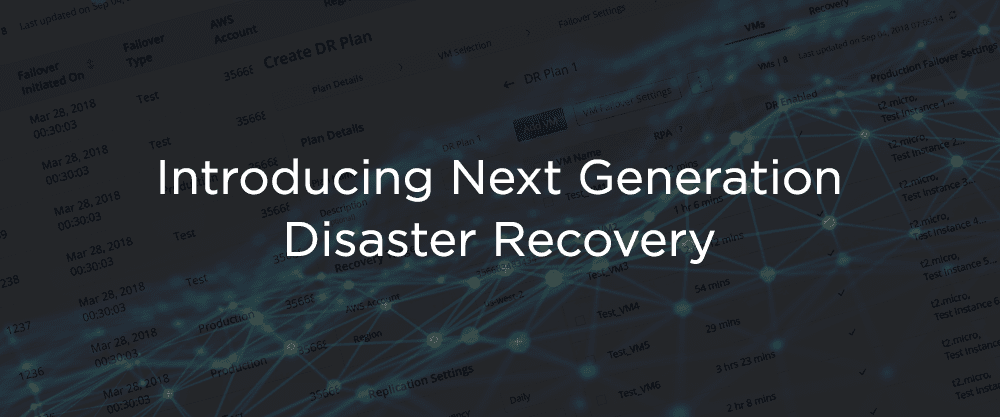In a world of multiple site failures and data outages, organizations struggle to find the right disaster recovery (DR) solution that fits their needs. There are many solutions in the marketplace to choose from, but how do you know what’s best for your organization? If you have extra budget (lucky you) to spare, you can get a ‘managed service’ to replicate production data and have a DR solution but this is an expensive “insurance” option that not many can afford..
Others looking to keep costs down may want to replicate servers or the backup copies to a data center in a secondary site. This may sound like a good idea, but in practical terms may be even more complex to implement, difficult to maintain, and inefficient (not to mention costly). In fact, now you have to invest in extra data center space, connectivity, servers, storage and recovery orchestration software, while also dealing with hidden costs such as power/cooling, site maintenance, and manpower. Additionally, the lack of scalability, fixed infrastructure location, hardware contracts, and likely outdated systems limits secondary site DR investments to only the most critical applications.
Cloud-Native Backup and Disaster Recovery
So what about using the cloud for disaster recovery? A public cloud-based DR solution could leverage your backup copies, reduce the complexity of the overall solution and make it simpler to configure, administer and test. Additionally, workloads configured for DR will be in geographically separate locations, further improving safety and resiliency.
Because of the aforementioned complexity and cost, DR is typically applied to a minimum number of services ear-marked as ‘mission critical’ whereas other application services rely solely on backup/recovery. Cloud-based DR disrupts this model and creates a new dynamic for businesses wanting immediate failover for a broader range of their applications services.
This is the reason over 80 percent of organizations are looking to the cloud for DR.
Druva For Disaster Recovery
As the only SaaS-based disaster recovery solution built on AWS, Druva’s DRaaS offering can help improve business continuity with features including automated runbook execution, tighter AWS integration, and simplified orchestration and testing – all while reducing costs by up to 60 percent. Customers can also leverage seamless one-click failover to the cloud for on-premises workloads, and uniquely, recovery for cloud workloads with cross-region/account support.
Druva has developed an offering that can meet enterprise compliance needs at scale with a recovery time objective (RTO) of minutes and recovery point objective (RPO) of an hour across any AWS Region.
Enterprises no longer need to rely on hardware, multi-vendor approaches or managed disaster recovery sites to ensure successful and timely restores. This enables enterprises to achieve core DR requirements in a cost effective and predictable manner.
The Benefits
Leveraging the global reach of cloud, Druva’s disaster recovery solution delivers recovery time objective (RTO) within minutes and recovery point objectives (RPO) of an hour across any AWS region/account in the world. The solution offers a number of other features as well, including:
- Recovery automation: As applications get more complex, the interdependency gets more complicated. Now with Druva, enterprises can automate runbook execution and streamline processes for rapid recovery.
- Failback recovery: Druva’s disaster recovery supports hybrid workload failback, for example to VMware on AWS or on-premises data centers to align with enterprise compliance.
- Automated disaster recovery testing: Testing is a key (and often time consuming) part of maintaining a disaster recovery solution. Now, enterprises can automate the process, ensuring the team is prepared for a potential disaster, and meeting compliance and audit requirements.
- Replication and mobility: Users have the ability to replicate virtual machines, clone full VPCs, and also move them cross-region/account for test and development, and greater resiliency
- AWS Native Architecture – Unlike other data protection solutions that are retrofitted for the cloud, Druva was built in the cloud to provide a future-proof solution that easily scales into the petabytes with unmatched storage flexibility, data durability, and security, with a fully cloud-architected data protection and disaster recovery solution.
For more about Druva’s new DRaaS capabilities, check out our press release, solution page, or just ask in the chat window!
